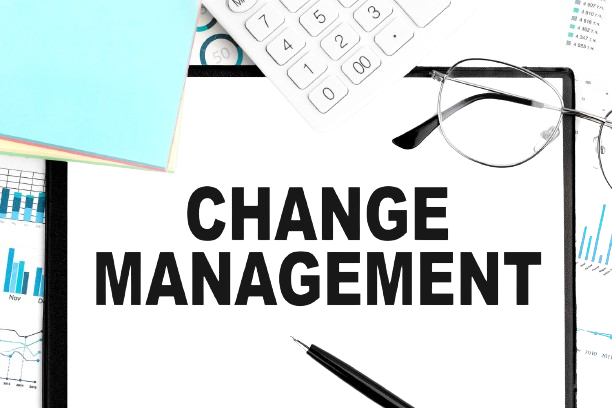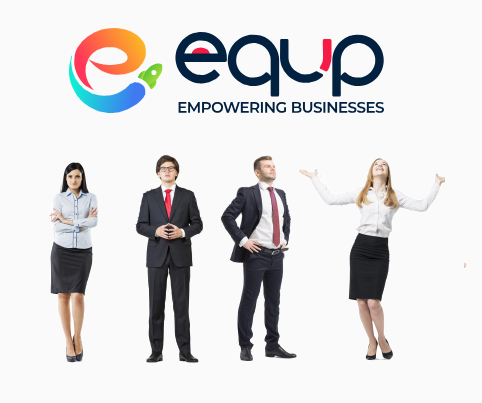
In 2024, the significance of change management for businesses cannot be overstated. Rapid technological advancements necessitate businesses to stay ahead and a survey by the Industry Research
Organization underscores that 78% of organizations effectively incorporating change management reported a smoother transition to new technologies. Meanwhile, the correlation between change management and employee engagement is evident, with studies from the Employee Engagement Institute revealing a 20% increase in satisfaction and a 15% boost in productivity for businesses with robust change management practices.
Addressing resistance to change is equally vital, as noted by the Change Management Institute’s research indicating a 25% reduction in resistance for organizations with well-established change management protocols.
Moreover, in the pursuit of innovation and agility, companies prioritizing change management practices experienced a 30% increase in innovation success rates, according to a Global Innovation Report. This highlights the pivotal role of proactive change management in fostering a culture of innovation and adaptability.
Additionally, project success is intricately linked to effective change management, with a 23% higher likelihood of meeting or exceeding objectives for projects with dedicated change management strategies. As businesses navigate the challenges and opportunities of 2024, embracing change management through the best CRM software emerges not only as a necessity but as a strategic differentiator, positioning organizations for sustained success in the changing and evolving business landscape.
But before we move forward and understand the role of CRM software in change management, let’s first understand the concept of change management and change management strategy. BBuTop of Form
What is Change Management?

Change management is a systematic approach to dealing with the transformation or evolution of an organization’s goals, processes, technologies, culture, or structure. It involves methods, processes, and tools to effectively guide individuals, teams, and the organization as a whole through the process of change.
What is a Change Management Strategy?

Change management strategy refers to a structured plan or approach that organizations adopt to facilitate the smooth transition from the current state to a desired future state. It is a comprehensive and systematic process that helps organizations manage and navigate changes effectively, whether they are related to organizational structure, processes, technology, or culture. The primary goal of a change management strategy is to minimize resistance to change, ensure that employees are well-prepared and engaged, and optimize the chances of successful implementation.
Some key components and elements that typically make up a change management strategy:
- Assessment and Planning
- Current State Analysis: Assess the existing organizational structure, culture, processes, and systems to understand the current state.
- Identify Need for Change: Clearly define the reasons behind the need for change, whether it’s due to market shifts, technological advancements, or internal factors.
2. Vision and Objectives
- Define the Future State: Clearly articulate the vision for the future state of the organization after the changes are implemented.
- Set Objectives: Establish measurable objectives to gauge the success of the change initiative.
3. Stakeholder Analysis
- Identify Stakeholders: Identify and categorize all stakeholders, including employees, leadership, customers, and external partners.
- Assess Impact: Evaluate how the changes will impact each stakeholder group.
4. Communication Plan
- Develop Communication Strategy: Create a detailed plan for communicating information about the changes, addressing concerns, and maintaining transparency.
- Select Communication Channels: Choose appropriate channels to disseminate information, such as meetings, emails, newsletters, and intranet.
5. Training and Development
- Assess Training Needs: Identify the skills and knowledge required for employees to adapt to the changes.
- Develop Training Programs: Design and implement training programs to ensure employees are adequately prepared for their roles in the new environment.
6. Leadership Alignment
- Engage Leadership: Ensure that leaders are aligned with the change and are actively involved in promoting and supporting it.
- Provide Leadership Training: Equip leaders with the skills and knowledge needed to guide their teams through the change.
7. Employee Engagement
- Create Employee Involvement Strategies: Foster a sense of involvement and ownership among employees by involving them in the change process.
- Address Resistance: Develop strategies to address and manage resistance to change, promoting a positive and open culture.
8. Monitoring and Evaluation
- Establish Key Performance Indicators (KPIs): Define KPIs to measure the success of the change initiative.
- Regularly Evaluate Progress: Continuously monitor and evaluate the progress of the change implementation, making adjustments as needed.
9 Sustainability and Reinforcement
- Reinforce Changes: Implement measures to reinforce the changes and integrate them into the organizational culture.
- Celebrate Success: Acknowledge and celebrate milestones and successes achieved during the change process.
A well-developed change management strategy provides a roadmap for organizations to navigate the complexities of change, ensuring that the entire workforce is aligned, engaged, and capable of adapting to the evolving circumstances.
Why Change Management Strategy Is Important?

Due to constant shifts and unexpected challenges, the importance of change management strategies cannot be overstated. The events of the 2020 pandemic brought unforeseen disruptions, compelling businesses to reevaluate and transform their operations.
According to Census data, a significant 45% of businesses with employees experienced changes in payroll management, while 39% witnessed a reduction in headcount. In this context, organizational change management strategies emerged as essential tools to navigate the uncertainties and establish a footing in the “new normal.”
Adapting to changing market conditions is a crucial aspect of business survival. The cautionary tale of Blockbuster Video serves as a stark reminder. The company’s reluctance to embrace evolving customer needs and preferences, coupled with a failure to integrate new technologies, led to its downfall. A steadfast focus on the status quo can result in missed opportunities and an inability to stay competitive.
Moreover, change isn’t confined to external factors; it permeates internal dynamics as well. Team members within an organization may yearn for changes in business processes, and it is here that effective change management strategies play a pivotal role. Beyond merely adapting to external pressures, managing change throughout the business positively influences the company’s culture. A well-crafted change management strategy contributes to:
- Reducing Potential Resistance to Change: Acknowledging and addressing concerns helps minimize resistance, fostering a more receptive environment for change.
- Improving Understanding of Proposed Changes: Clear communication and transparency enhance employees’ comprehension of the reasons behind changes, promoting a shared vision.
- Encouraging Participation in the Change Process: Actively involving team members in the change process cultivates a sense of ownership and engagement, leading to smoother transitions.
In a world where change is constant, the ability to effectively manage and embrace change becomes a cornerstone of long-term success for businesses.
Three Types of Change Management Strategies

Change is an inevitable force in the business world, and organizations must navigate it strategically to thrive in dynamic environments. Change management strategies provide a structured approach to guide these transformations. Let’s explore three distinct types of change management strategies, each tailored to address specific organizational needs.
- Incremental Change Strategy:
Overview: Incremental change strategies involve making small, continuous adjustments to existing processes, structures, or systems. This approach is gradual and allows organizations to evolve steadily without causing major disruptions.
Key Characteristics:
- Continuous Improvement: Emphasizes ongoing, incremental improvements rather than large-scale overhauls.
- Employee Involvement: Encourages active participation from employees at all levels, fostering a culture of continuous learning and adaptation.
- Risk Mitigation: Minimizes the risk of resistance by introducing changes in manageable, bite-sized increments. When to Use: Incremental change is ideal for organizations seeking to enhance efficiency, refine existing processes, or introduce minor adjustments without causing significant disruption.
- Transformational Change Strategy:
Overview: Transformational change strategies involve radical shifts in organizational structure, culture, or processes. This approach is disruptive but aims to bring about profound and lasting changes, often in response to major external shifts.
Key Characteristics:
- Visionary Leadership: Requires strong and visionary leadership to guide the organization through a comprehensive transformation.
- Culture Shift: Involves a fundamental change in organizational culture, often necessitating a shift in mindset and values.
- High Risk, High Reward: Inherently carries higher risks due to the magnitude of change but offers the potential for significant rewards. When to Use: Transformational change is suitable when organizations face a need for radical adaptation, such as entering new markets, responding to disruptive technologies, or undergoing strategic repositioning.
- Adaptive Change Strategy:
Overview: Adaptive change strategies focus on building organizational agility and responsiveness. This approach acknowledges the inevitability of change and seeks to develop a culture and structure that can readily adapt to evolving circumstances.
Key Characteristics:
- Flexibility: Prioritizes creating a flexible and adaptable organizational structure that can respond to changes swiftly.
- Continuous Learning: Encourages a culture of continuous learning and experimentation to stay ahead in a rapidly changing environment.
- Employee Empowerment: Empowers employees to contribute ideas and solutions, fostering a sense of ownership in the change process. When to Use: Adaptive change is particularly relevant in industries with high uncertainty and volatility, where the ability to adapt quickly to market shifts is a competitive advantage.
Understanding these three change management strategies provides organizations with a versatile toolkit to navigate the complexities of change and choose the most suitable approach based on their specific goals and circumstances.
Implementing Effective Change Management Strategies To Your Business

Here’s a comprehensive guide on how to implement these strategies successfully:
- Leadership Alignment
- Engage Leadership Early: Ensure top-level executives are actively involved in the change process from the beginning.
- Communicate a Clear Vision: Leaders should articulate a compelling vision for the change, emphasizing the benefits and aligning it with the organization’s long-term goals.
- Stakeholder Engagement
- Identify and Analyze Stakeholders: Recognize all stakeholders involved, internally and externally, and assess their concerns and expectations.
- Tailor Communication: Customize communication strategies for different stakeholder groups to address their specific needs and perspectives.
- Communication Plan
- Transparent and Timely Communication: Establish a detailed plan for consistent and transparent communication throughout the change process.
- Two-Way Communication: Encourage open dialogue, feedback, and questions to address concerns and keep employees informed.
- Training and Development
- Assess Training Needs: Identify the skills and knowledge required for employees to adapt to the changes.
- Provide Targeted Training Programs: Develop and implement training initiatives to equip employees with the skills necessary for the new environment.
- Create a Change Management Team
- Assemble a Dedicated Team: Form a cross-functional team specifically focused on managing the change process.
- Define Roles and Responsibilities: Clearly outline the roles and responsibilities of each team member to ensure a coordinated effort.
- Encourage Employee Involvement
- Foster a Culture of Participation: Actively involve employees in the change process to cultivate a sense of ownership.
- Create Feedback Mechanisms: Establish channels for employees to provide feedback, share concerns, and contribute ideas.
- Address Resistance
- Proactively Identify and Address Concerns: Anticipate sources of resistance and develop strategies to address them proactively.
- Promote a Positive Narrative: Communicate success stories and positive outcomes resulting from the change to build confidence.
- Monitor and Evaluate Progress
- Establish Key Performance Indicators (KPIs): Define measurable indicators to assess the success of the change initiative.
- Regularly Assess and Adjust: Continuously monitor progress, gather feedback, and be prepared to make adjustments based on evolving circumstances.
- Celebrate Success and Recognize Contributions
- Acknowledge Milestones: Celebrate achievements and milestones reached during the change process.
- Recognize Employee Contributions: Publicly acknowledge and appreciate the efforts of individuals and teams involved.
- Sustain the Change
- Integrate Changes into Culture: Ensure that the changes become ingrained in the organizational culture.
- Provide Ongoing Support: Continue to support employees as they adapt to the new normal.
By following these steps, businesses can foster a positive environment for change, reduce resistance, and increase the likelihood of successful change implementation. The key is to approach change management as an ongoing process that involves and empowers the entire organization.
Embracing Change with EQUP – An All-In-One CRM Software

The ability to adapt and embrace change is paramount. EQUP, an all-in-one best CRM software, emerges as a transformative force, empowering organizations to navigate change with unparalleled efficiency and effectiveness.
Understanding EQUP
- Integrated Features for Holistic Management:
EQUP stands out as a comprehensive CRM solution, seamlessly integrating various features essential for holistic organizational management. From customer interactions and sales pipelines to marketing campaigns and data analytics, EQUP brings all critical aspects under one unified platform.
- Customer-Centric Approach:
EQUP places the customer at the center of its design philosophy. By providing a 360-degree view of customer interactions, preferences, and history, the software enables businesses to create personalized and targeted strategies, fostering stronger and more enduring customer relationships.
- Adaptable to Varied Business Models:
Whether you operate in B2B or B2C markets, EQUP is designed to adapt to diverse business models. Its flexibility ensures that businesses of all sizes and industries can tailor the software to meet their specific needs, making it a versatile solution for evolving market demands.
A Comprehensive Exploration of EQUP’s Key Features
EQUP stands out as a comprehensive business management solution, encompassing a wide array of features designed to streamline various aspects of your operations. Let’s delve into the key features that EQUP offers:
- Sales and CRM
- 360-Degree Customer Insight: EQUP provides a holistic view of customer interactions, preferences, and historical data, empowering businesses to understand and engage with customers more effectively.
- Lead and Contact Management: Efficiently navigates leads and contacts through the entire sales cycle, ensuring a systematic approach to customer relationship management.
- Sales Pipeline Tracking: Visualize and monitor sales opportunities at each stage of the pipeline, facilitating strategic decision-making.
- Marketing Automation:
- Automated Campaigns: EQUP streamlines marketing efforts by enabling the planning and execution of targeted campaigns through automated workflows.
- Lead Scoring: Identify and prioritize leads based on predefined criteria, allowing for focused attention on high-value prospects.
- Email Marketing Integration: Seamlessly integrate with email marketing tools to enhance communication and engagement with your audience.
- Landing Pages & Forms:
- Customizable Landing Pages: EQUP empowers users to create visually appealing and customized landing pages that captivate and convert visitors.
- Form Builder: Design and deploy forms effortlessly to capture valuable customer information, optimizing data collection processes.
- Workflow Automation:
- Process Streamlining: Automate repetitive tasks and streamline internal processes, reducing manual workload and enhancing operational efficiency.
- Conditional Logic: Implement conditional logic to trigger specific actions automatically based on predefined criteria, ensuring a dynamic workflow.
- Billing Management:
- Invoicing and Payments: EQUP facilitates the generation of invoices, efficient billing cycle management, and supports online payment processing.
- Subscription Management: Effectively manage recurring billing and subscription-based services, ensuring seamless financial transactions.
- Booking & Appointment:
- Appointment Scheduling: Enable customers to schedule appointments seamlessly, enhancing convenience and improving customer experience.
- Calendar Integration: Sync appointments with calendars, providing an organized approach to managing schedules.
- Deals & Pipelines:
- Deal Tracking: EQUP enables businesses to track and manage deals comprehensively from initiation to closure.
- Pipeline Visualization: Gain valuable insights through visual representations of the sales pipeline, facilitating strategic planning and decision-making.
- Dynamic Segmentation:
- Targeted Segmentation: EQUP offers dynamic segmentation capabilities, allowing businesses to categorize customers based on various criteria.
- Personalized Campaigns: Tailor marketing efforts for specific customer segments, enhancing the relevance and effectiveness of campaigns.
- Omnichannel:
- Multi-Channel Engagement: Engage with customers seamlessly across various channels, including email, social media, and live chat.
- Unified Customer Experience: EQUP ensures a consistent and seamless experience across all customer touchpoints, enhancing brand perception and loyalty.
- Analytics and Reporting:
- Real-time Dashboards: Access real-time insights through customizable dashboards, providing a comprehensive overview of key performance metrics.
- Performance Analytics: Track the effectiveness of marketing campaigns, sales efforts, and overall business performance through robust analytics and reporting tools.
- Collaboration Tools:
- Shared Workspaces: EQUP facilitates collaboration among team members with shared project spaces, enhancing communication and project management.
- Instant Messaging: Integrated messaging tools promote real-time communication, fostering collaboration and information sharing.
- Integration Capabilities:
- Third-Party Integrations: EQUP seamlessly integrates with third-party tools, ensuring compatibility with existing software and expanding its functionality.
- API Access: The platform provides API access, offering developers the flexibility to extend functionality and integrate with custom solutions.
- Security and Compliance:
- Data Encryption: EQUP prioritizes data security through robust encryption protocols, safeguarding sensitive information.
- Compliance Standards: Adhering to industry-specific compliance standards and data protection regulations, EQUP ensures a secure and compliant environment.
In short, EQUP transcends traditional CRM software, emerging as a dynamic and versatile solution. With a focus on automation, customization, and collaboration, EQUP empowers businesses to adapt and thrive in a rapidly evolving business landscape. Whether streamlining sales processes, optimizing marketing efforts, or ensuring secure data management, EQUP stands as a comprehensive tool for organizations seeking operational excellence and strategic growth.